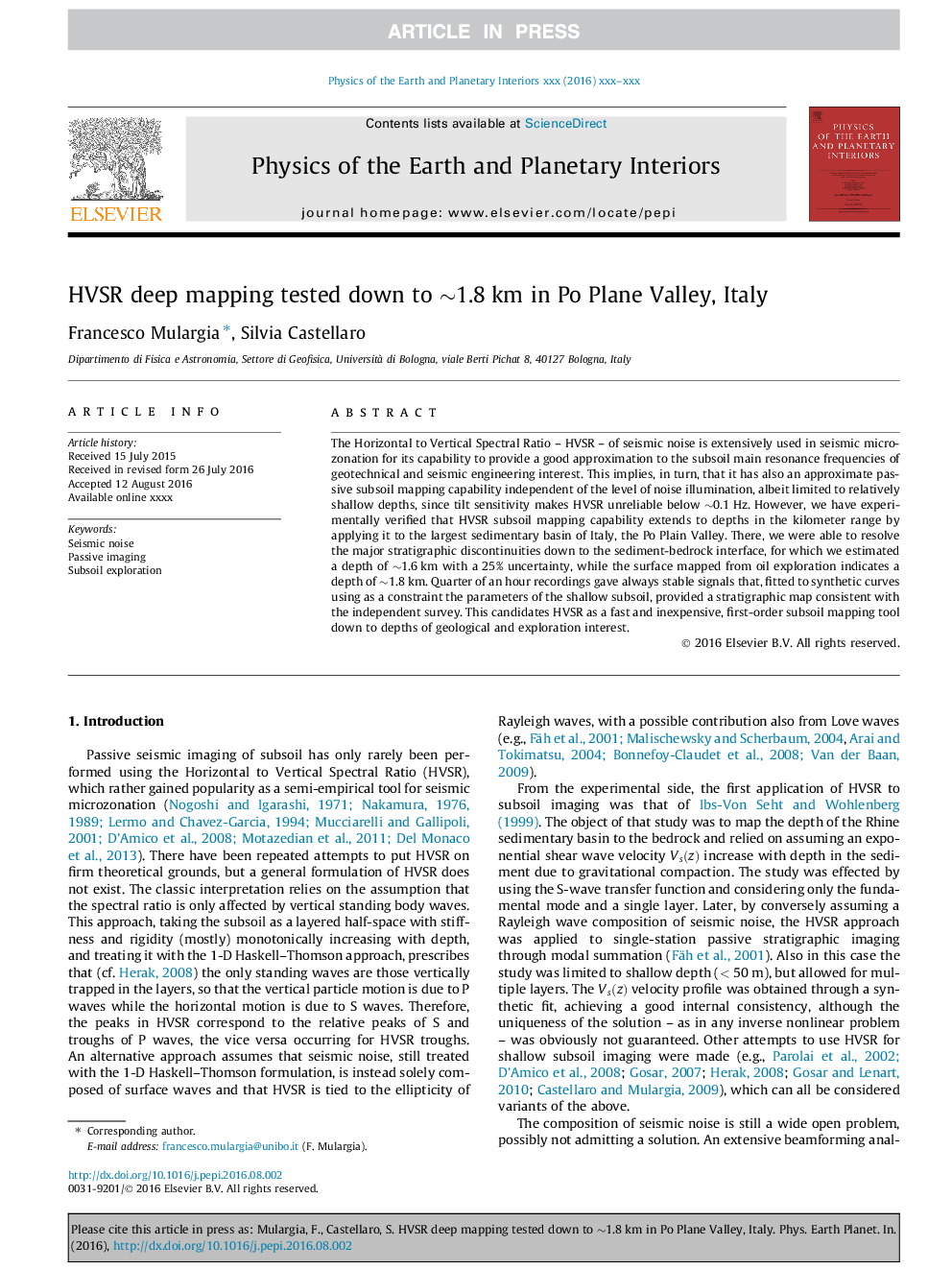| Article ID | Journal | Published Year | Pages | File Type |
|---|---|---|---|---|
| 5787377 | Physics of the Earth and Planetary Interiors | 2016 | 7 Pages |
Abstract
The Horizontal to Vertical Spectral Ratio - HVSR - of seismic noise is extensively used in seismic microzonation for its capability to provide a good approximation to the subsoil main resonance frequencies of geotechnical and seismic engineering interest. This implies, in turn, that it has also an approximate passive subsoil mapping capability independent of the level of noise illumination, albeit limited to relatively shallow depths, since tilt sensitivity makes HVSR unreliable below â¼0.1Â Hz. However, we have experimentally verified that HVSR subsoil mapping capability extends to depths in the kilometer range by applying it to the largest sedimentary basin of Italy, the Po Plain Valley. There, we were able to resolve the major stratigraphic discontinuities down to the sediment-bedrock interface, for which we estimated a depth of â¼1.6Â km with a 25% uncertainty, while the surface mapped from oil exploration indicates a depth of â¼1.8Â km. Quarter of an hour recordings gave always stable signals that, fitted to synthetic curves using as a constraint the parameters of the shallow subsoil, provided a stratigraphic map consistent with the independent survey. This candidates HVSR as a fast and inexpensive, first-order subsoil mapping tool down to depths of geological and exploration interest.
Keywords
Related Topics
Physical Sciences and Engineering
Earth and Planetary Sciences
Geophysics
Authors
Francesco Mulargia, Silvia Castellaro,
